Ready to explore one of the most other worldly landscapes on the planet and would like to know when its the best time to visit Death Valley? With its surreal salt flats, towering dunes, and rugged canyons, is a destination unlike any other. But here’s the catch—timing is everything.
Approximately 10% of Death Valley National Park is in Nevada. The majority of the park, about 90%, is located in California. The Nevada portion is primarily in the Amargosa Desert, with the park extending into Nye County, Nevada. Most of the well-known features and attractions of Death Valley, like Badwater Basin and Furnace Creek, are in the California portion.
This desert wonderland is notorious for its extreme weather, so picking the perfect time to go is crucial for an epic adventure. Whether you’re dreaming of panoramic vistas or hoping to catch a rare bloom of wildflowers, the right season can make all the difference.
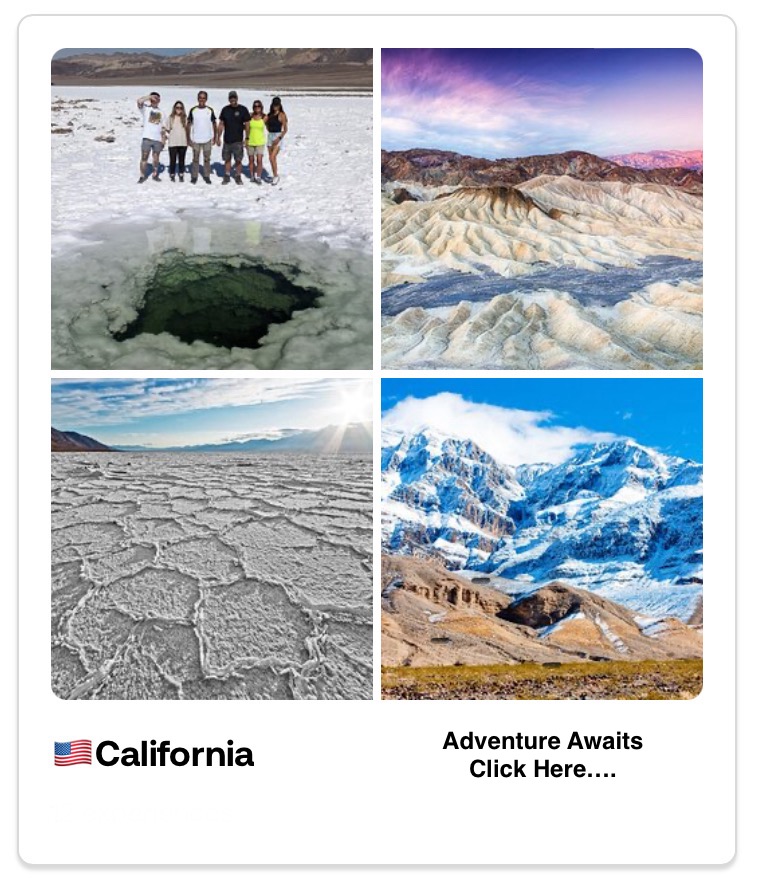
So, when should you pack your bags for this unforgettable journey? Let’s dive in and find out!
Contents
Top Attractions in Death Valley
Before we dive into the best time to travel, let’s take a moment to explore what makes Death Valley so extraordinary. This vast, arid landscape is home to a treasure trove of natural wonders and hidden gems just waiting to be discovered.
Badwater Basin
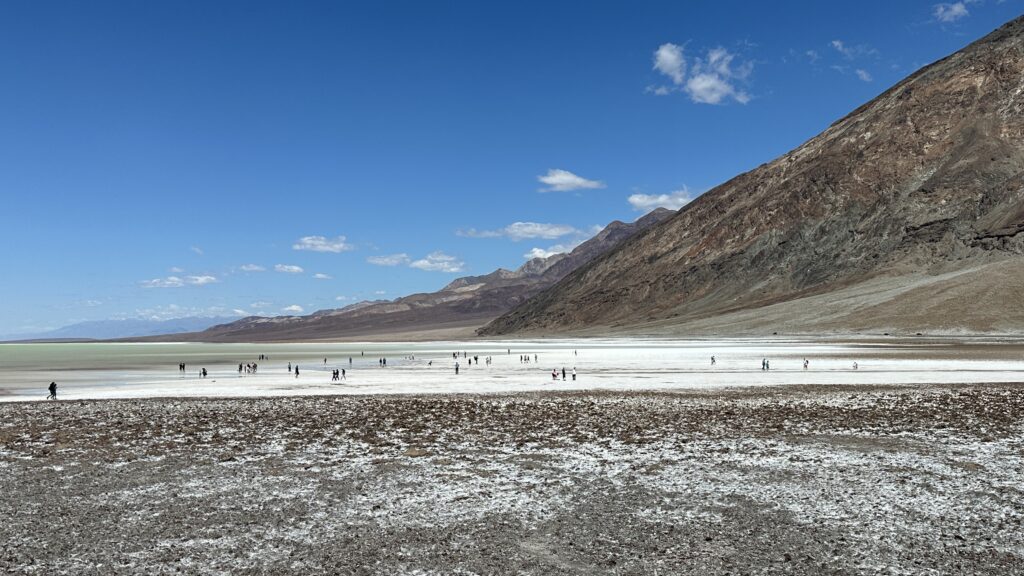
Badwater Basin is one of those places that feels like it belongs on another planet. As you step onto the vast, salt-crusted flats, you’re standing at the lowest point in North America, 282 feet below sea level.
The landscape stretches out in front of you, a dazzling white expanse that seems to go on forever, reflecting the sun in a way that makes the entire scene feel almost surreal. It’s a place where the stark beauty of the desert is on full display, and the silence is so profound, you can hear the crunch of salt beneath your feet.
Here, nature strips everything down to its most elemental form, offering an experience that’s as humbling as it is awe-inspiring.
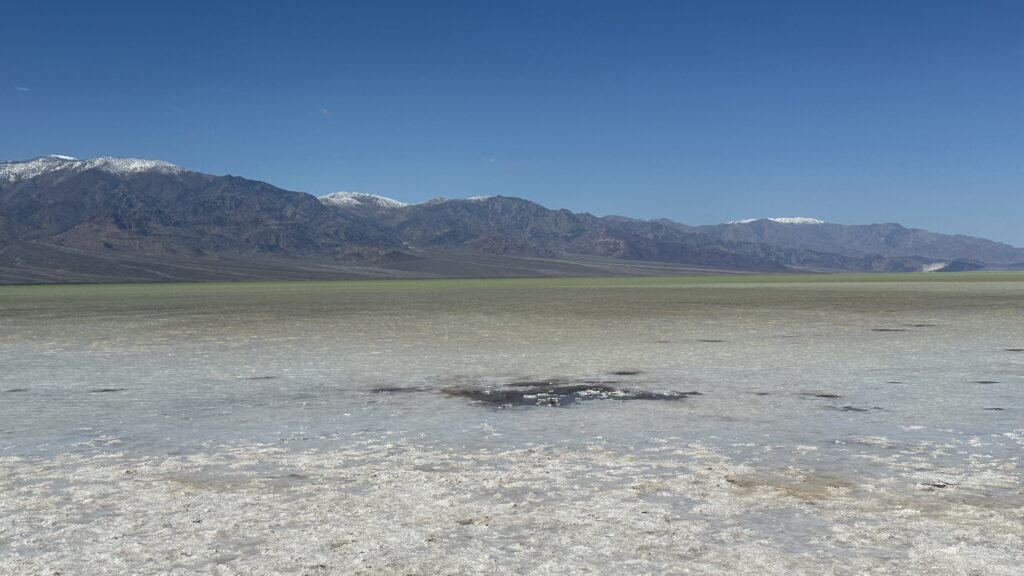
As you wander across the basin, you might find small pools of water that give the area its name, seemingly lifeless yet teeming with microorganisms that have adapted to survive in this harsh environment.
Whether you’re visiting at sunrise, when the basin glows with soft pastel hues, or under the intense midday sun, the experience of Badwater Basin is one that lingers long after you leave, a reminder of the incredible power and beauty of the natural world.
Mesquite Flat Sand Dunes
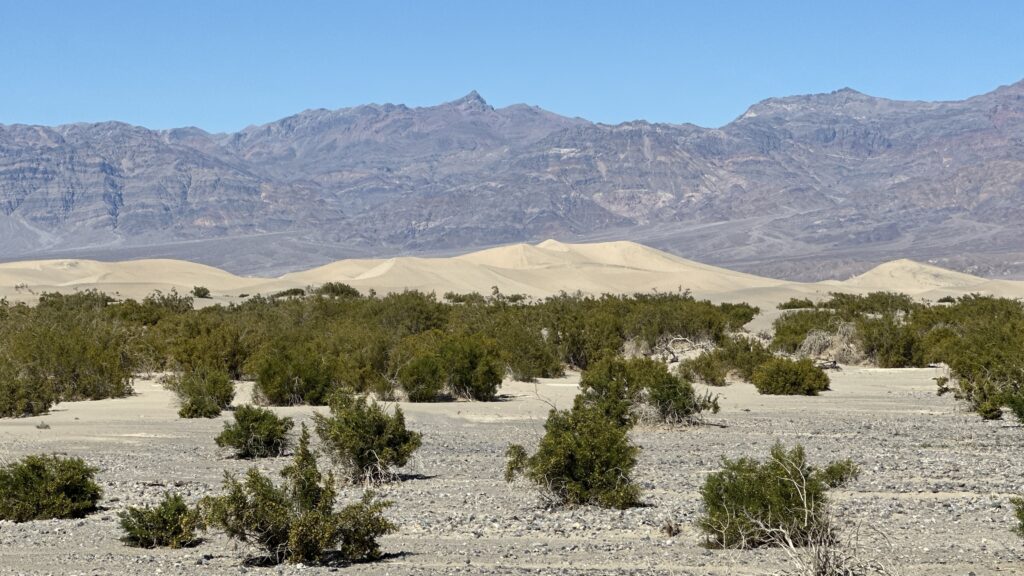
The Mesquite Flat Sand Dunes are one of Death Valley’s most iconic and accessible natural wonders, a shimmering sea of golden sand that stretches out against a backdrop of rugged mountains.
As you approach the dunes, the landscape gradually transforms, with the flat, hard desert floor giving way to undulating hills of fine sand. These dunes rise and fall in graceful curves, their shapes constantly shifting with the wind. Each crest offers a new perspective, whether it’s the sweeping view of the entire dune field or the intricate patterns created by the breeze as it dances across the sand.
Visiting at sunrise or sunset is particularly magical, as the low angle of the sun casts long shadows and turns the sand into a tapestry of light and shade, with the dunes glowing in shades of gold, orange, and pink.
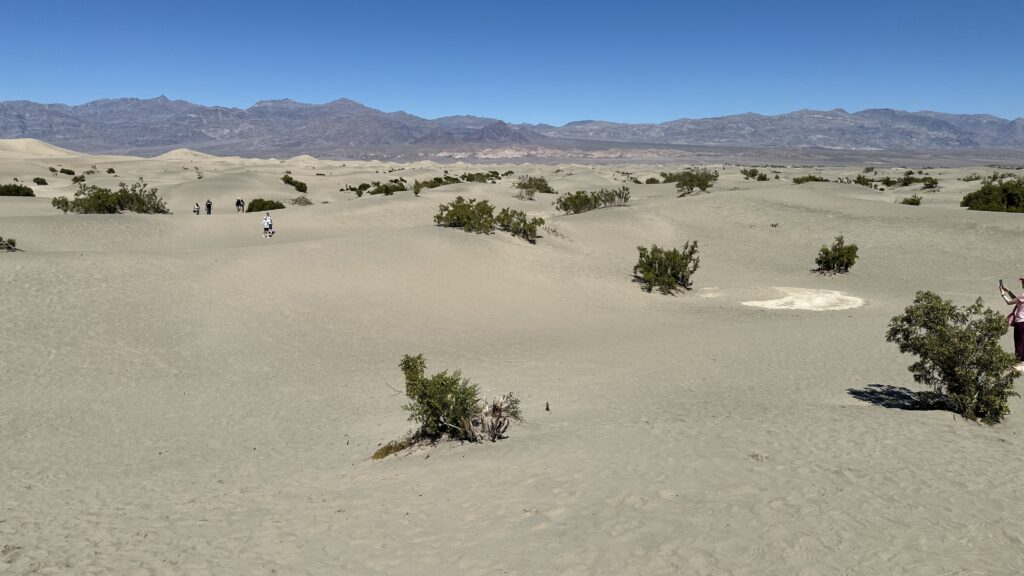
What makes the Mesquite Flat Sand Dunes truly special is the sense of adventure they evoke. Unlike some of Death Valley’s more remote attractions, the dunes are easy to access, inviting visitors to wander and explore at their own pace.
You can hike to the top of the highest dunes for a panoramic view of the surrounding valley, or simply find a quiet spot to sit and soak in the serene beauty of the desert. If you’re lucky, you might spot the tracks of wildlife, such as sidewinder snakes or kit foxes, etched in the sand, a reminder of the life that thrives in this harsh environment.
Whether you’re a seasoned hiker, a photographer looking to capture the perfect shot, or someone who simply wants to experience the timeless allure of the desert, the Mesquite Flat Sand Dunes offer a chance to connect with the wild, unspoiled beauty of Death Valley in a way that’s both thrilling and deeply peaceful.
Zabriskie Point
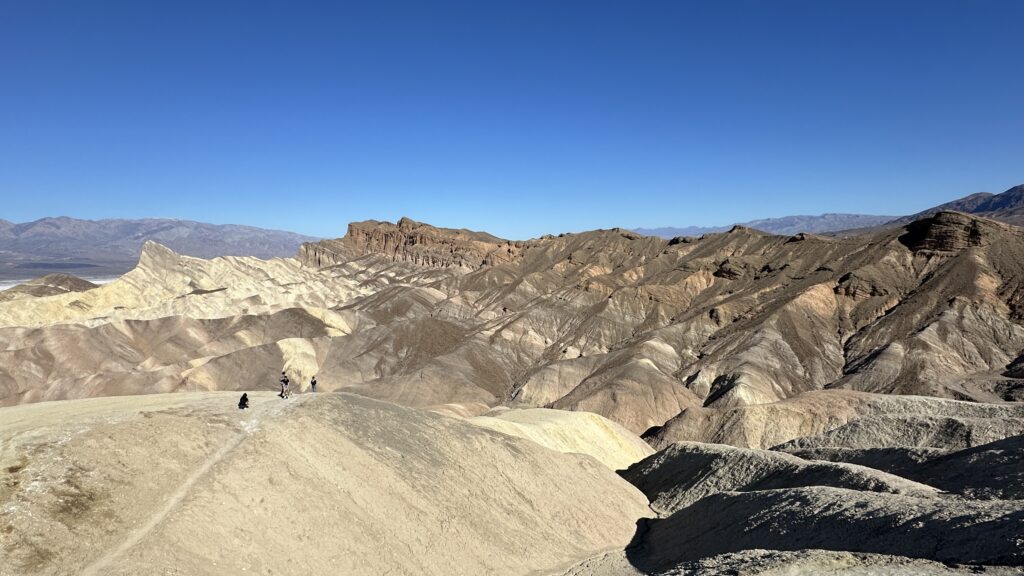
Zabriskie Point is one of Death Valley’s most breathtaking viewpoints, a place where the earth seems to fold and ripple in waves of gold, ochre, and deep rust. As you stand at the overlook, you’re greeted by a panorama that is both surreal and stunningly beautiful, with the eroded badlands stretching out before you in an intricate maze of ridges and valleys.
This is one of those rare places where you can truly feel the power of geological time, as millions of years of erosion and tectonic forces have sculpted the landscape into a masterpiece of natural art. The view from Zabriskie Point is particularly captivating at sunrise or sunset when the soft light enhances the vivid colors and deep shadows, transforming the scene into a living painting.

But Zabriskie Point is more than just a scenic overlook; it’s a gateway to understanding the unique geology of Death Valley. The badlands below were formed from ancient lakebed sediments that have been uplifted and eroded over eons, creating a landscape that is as fascinating as it is beautiful.
The view encompasses the Amargosa Range to the east and the salt flats of the valley floor to the west, offering a glimpse into the vast, varied terrain that defines this desert region. For those willing to venture beyond the overlook, a network of trails leads down into the badlands, allowing you to walk among the ridges and explore this otherworldly terrain up close. Whether you’re a geology enthusiast, a photographer, or simply someone who appreciates the raw beauty of nature, Zabriskie Point is a place that will leave a lasting impression on your soul.
Artist’s Drive and Artist’s Palette

Artist’s Palette is one of Death Valley’s most vibrant and captivating attractions, a stunning display of color that seems almost too vivid to be real. As you drive along the winding Artist’s Drive, the landscape suddenly bursts into a kaleidoscope of hues, with hillsides painted in shades of pink, purple, green, yellow, and blue. This natural rainbow is the result of volcanic deposits rich in minerals, which have been oxidized over time to create the dazzling array of colors. The effect is especially striking in the soft light of early morning or late afternoon, when the colors appear to glow against the stark desert surroundings, making Artist’s Palette feel like a hidden gem of geological artistry.
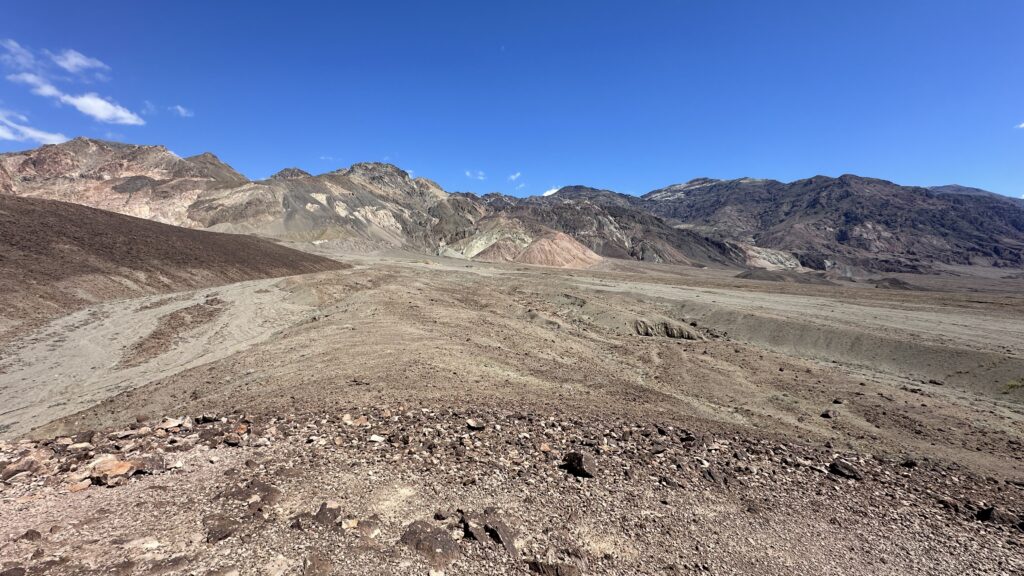
Visiting Artist’s Palette is a visual feast and a photographer’s dream, offering endless opportunities to capture the dynamic interplay of color and texture. The road leading to the site is an adventure in itself, with twists and turns that reveal new perspectives around every corner. Once you arrive, you can step out of your car and explore the area on foot, getting up close to the multicolored hills and experiencing the unique textures of the oxidized rock.
It’s a place that invites curiosity and exploration, as you marvel at how nature has created such a vibrant and unexpected masterpiece in the heart of one of the most desolate places on Earth. Whether you’re an artist seeking inspiration or a traveler looking to be awed by the beauty of nature, Artist’s Palette is a must-see destination that perfectly encapsulates the surreal and otherworldly charm of Death Valley.
Dante’s View
Prepare to be blown away by one of Death Valley’s most awe-inspiring viewpoints! Dante’s View offers a bird’s-eye panorama of the valley that will make you feel on top of the world. Perched at an elevation of over 5,000 feet (1,524 meters) on the Black Mountains, this overlook provides sweeping vistas of Death Valley’s expansive desert floor and the surrounding mountain ranges.
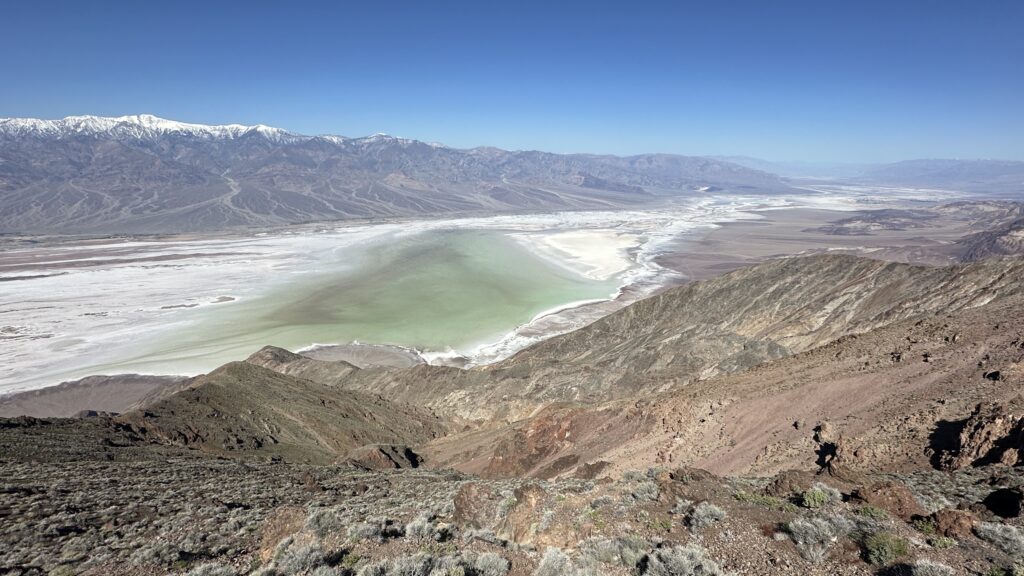
Dante’s View offers one of the most awe-inspiring panoramas in Death Valley, a vantage point that feels like standing on the edge of the world. Perched over 5,000 feet above the valley floor, this overlook provides a sweeping, 360-degree view of the entire valley, stretching from the salt flats of Badwater Basin far below to the towering peaks of the Panamint Range in the distance. On a clear day, you can even see Mount Whitney to the west and Charleston Peak to the east.
The elevation provides a refreshing break from the heat of the valley floor, making it a popular spot for sunrise or sunset, when the light paints the landscape in soft, golden hues. Whether you’re gazing out at the vastness of the desert or soaking in the serenity of the mountains, Dante’s View offers a profound sense of perspective and a deep connection to the natural beauty of Death Valley.
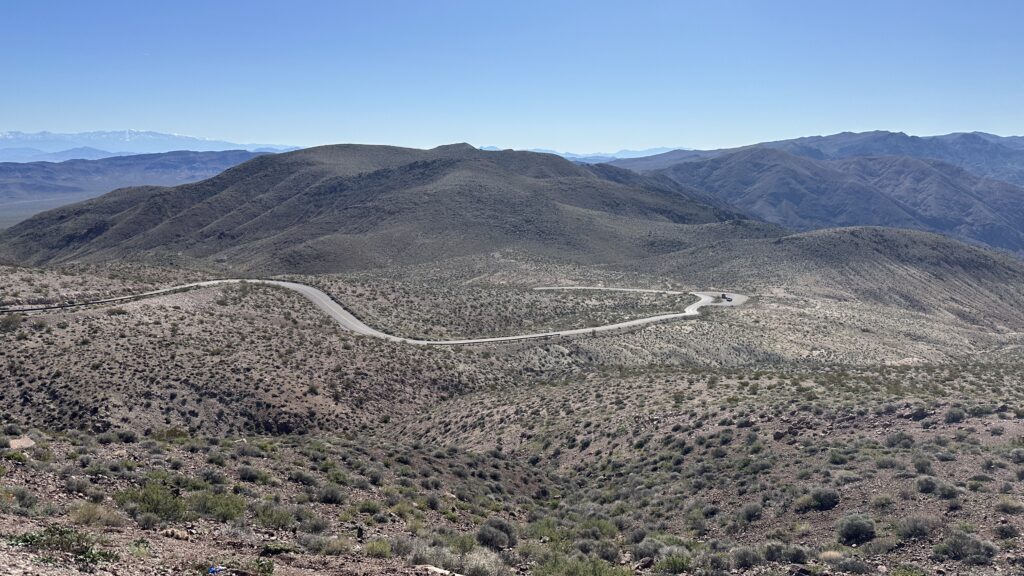
Racetrack Playa
Racetrack Playa is one of Death Valley’s most enigmatic and intriguing natural phenomena, renowned for its mysterious moving rocks. This vast, dry lakebed is a seemingly flat, open expanse surrounded by rugged mountains, but it’s the rocks scattered across its surface that capture the imagination.
These stones, some weighing several hundred pounds, leave long, seemingly deliberate trails as they slowly move across the playa, creating tracks in the cracked earth. The phenomenon, known as “sailing stones,” was a mystery for decades until recent scientific studies revealed that a combination of rare ice and wind conditions can cause the rocks to slide across the surface, leaving their distinctive trails.
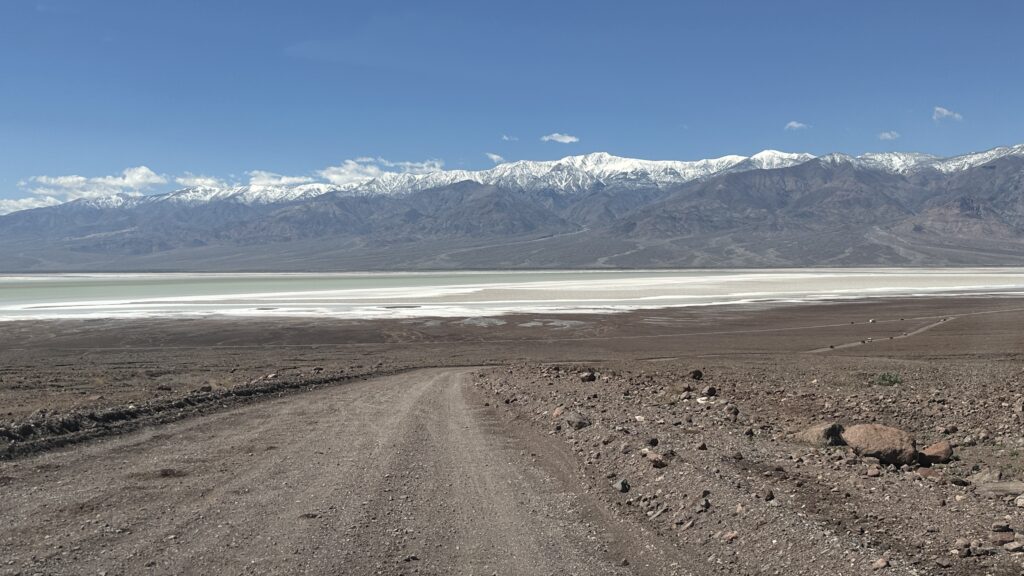
Reaching Racetrack Playa is an adventure in itself, involving a 27-mile trek along rugged, unpaved terrain that demands a high-clearance vehicle. The drive to this remote and captivating destination is not for the faint-hearted; the rough, bumpy road winds through rocky and uneven landscapes, making it essential to have a vehicle equipped to handle such challenges.
Given the isolated location, it’s wise to be well-prepared with ample supplies, including water, food, and a spare tire, to ensure a safe and enjoyable journey. The effort required to navigate this rugged path only adds to the sense of adventure and reward upon arriving at the playa, where the otherworldly landscape and its mysterious moving rocks await.
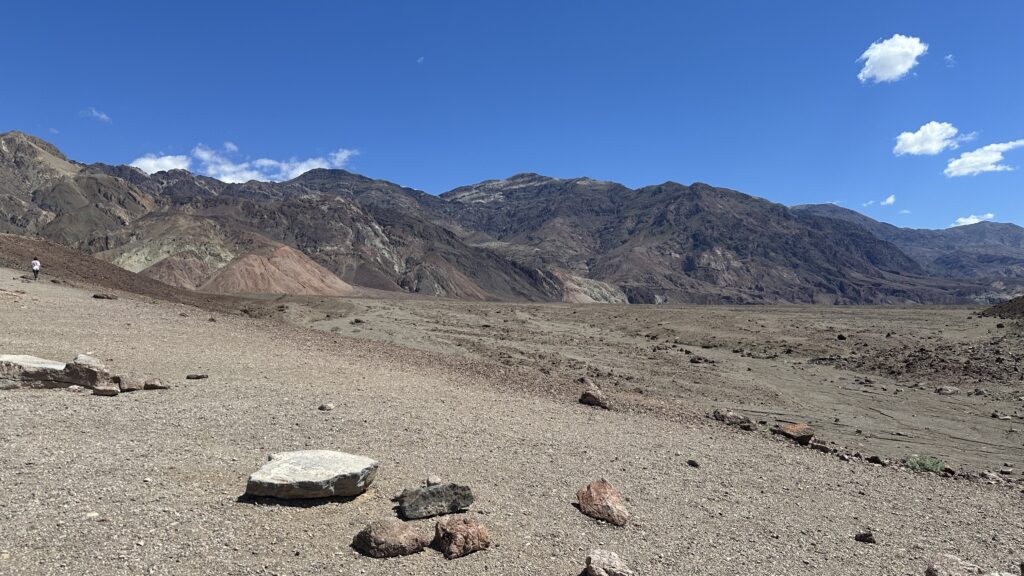
Tips for Visiting Death Valley
Before you set off on your journey to Death Valley, it’s important to be well-prepared for the unique challenges and extreme conditions you might encounter in this extraordinary desert landscape.
Best Time to Visit Death Valley
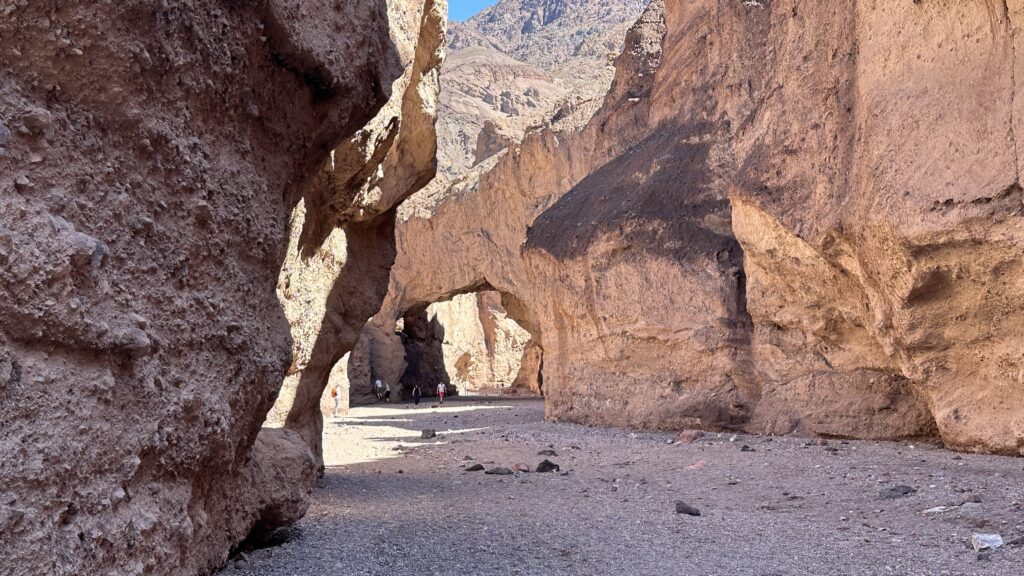
Death Valley’s extreme climate makes timing your visit crucial. The best months are from late fall through early spring, roughly October to April. During these cooler seasons, temperatures are more bearable, ranging from 60°F to 80°F (15°C to 27°C), making for a much more comfortable experience. Summer temperatures can soar well above 120°F (49°C), which can be both dangerous and uncomfortable for exploring. Before you visit, ensure that you check the National Park Service website.
What to Pack
Packing smart is key to enjoying your Death Valley adventure. Bring plenty of water—at least one gallon per person per day. Sunscreen, a wide-brimmed hat, and UV-protection clothing will shield you from the intense sun. Sturdy hiking boots are essential for exploring rugged terrain, while a good-quality camera will help you capture the stunning vistas. Don’t forget to pack a flashlight or headlamp if you plan to do any stargazing or early morning explorations.
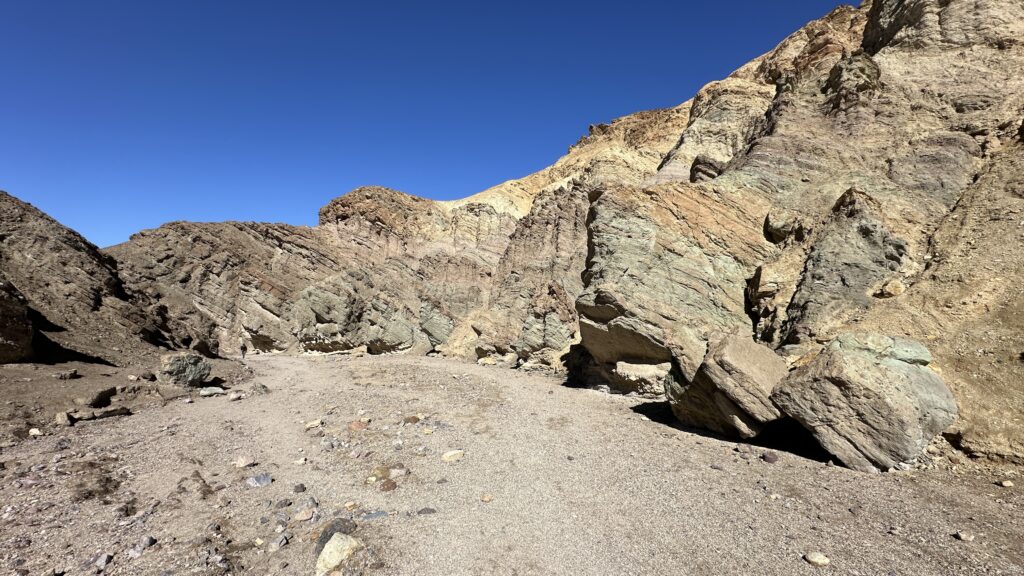
Safety Precautions
Safety is paramount in Death Valley’s extreme conditions. Always be mindful of heat-related illnesses like heat exhaustion and heat stroke. Stay hydrated, take frequent breaks, and avoid strenuous activities during peak heat hours. It’s also wise to check weather forecasts before heading out, as flash floods can occur, especially during the monsoon season. Let someone know your plans, and carry a fully charged phone for emergencies.
Accommodation Options
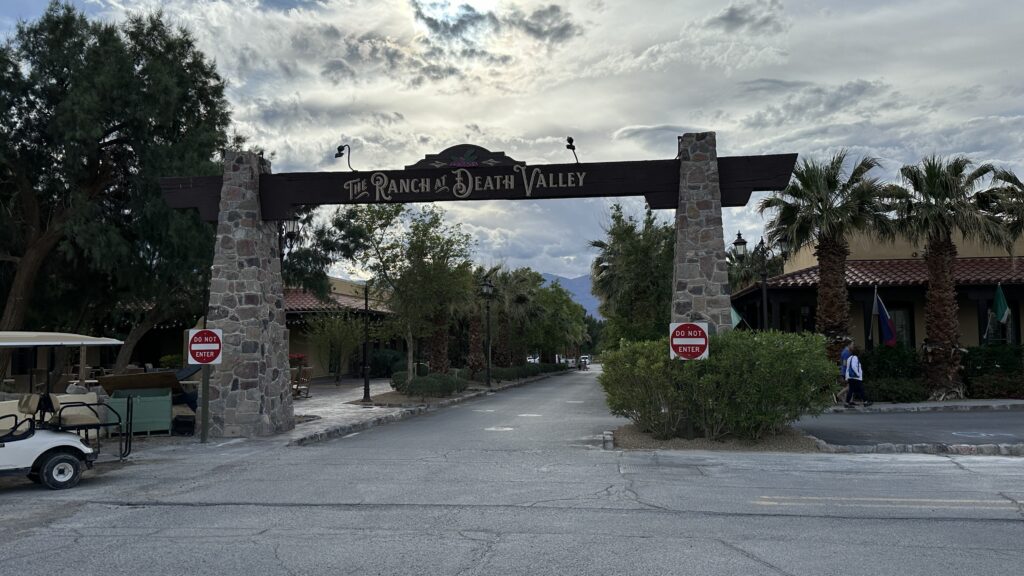
When it comes to lodging, you have a few choices both inside and near the park. Inside the park, Furnace Creek offers a range of options from campgrounds to more comfortable lodges. For a more rustic experience, campgrounds at Stovepipe Wells are available. If you prefer more amenities or different dining options, consider staying in the nearby town of Pahrump or in Beatty, Nevada. Booking ahead is recommended, especially during peak season.
Getting Around
Navigating Death Valley requires some preparation. A high-clearance vehicle is recommended for some of the park’s more rugged roads, such as the route to Racetrack Playa. Make sure to have a reliable map or GPS, as cell service can be spotty. Plan your routes and check road conditions before you go. Many of the park’s highlights are spread out, so be prepared for some driving to experience the diverse landscapes.

With these tips, you’ll be well-prepared to enjoy the stunning and extreme beauty of Death Valley while staying safe and comfortable.
Final Thoughts on Exploring Death Valley
As you plan your journey to Death Valley, timing can greatly enhance your experience of this awe-inspiring landscape. To truly appreciate the park’s remarkable beauty and explore its diverse attractions comfortably, the best time to visit Death Valley is between mid-October and mid-April.
During these cooler months, the weather is more forgiving, allowing you to make the most of Death Valley’s extraordinary natural wonders. With the right timing, your adventure through this desert wonderland will be both unforgettable and safe, offering the perfect backdrop for an exploration of one of the world’s most unique landscapes.
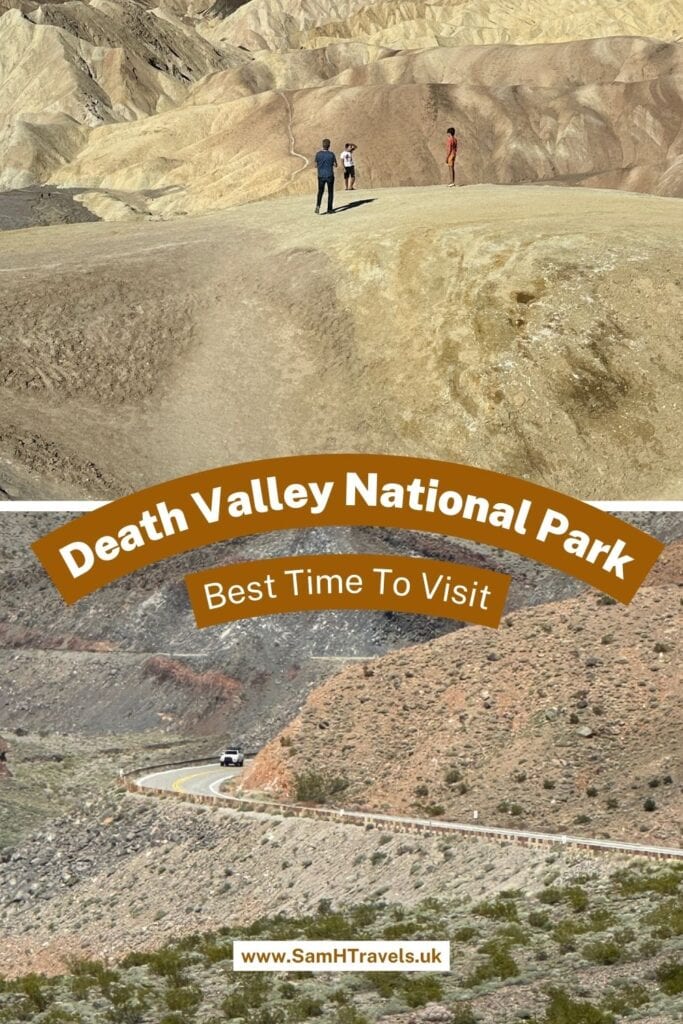



Sounds like an amazing place to visit. We have so much more to experience.
Some really great tips here, thanks Sam for sharing!